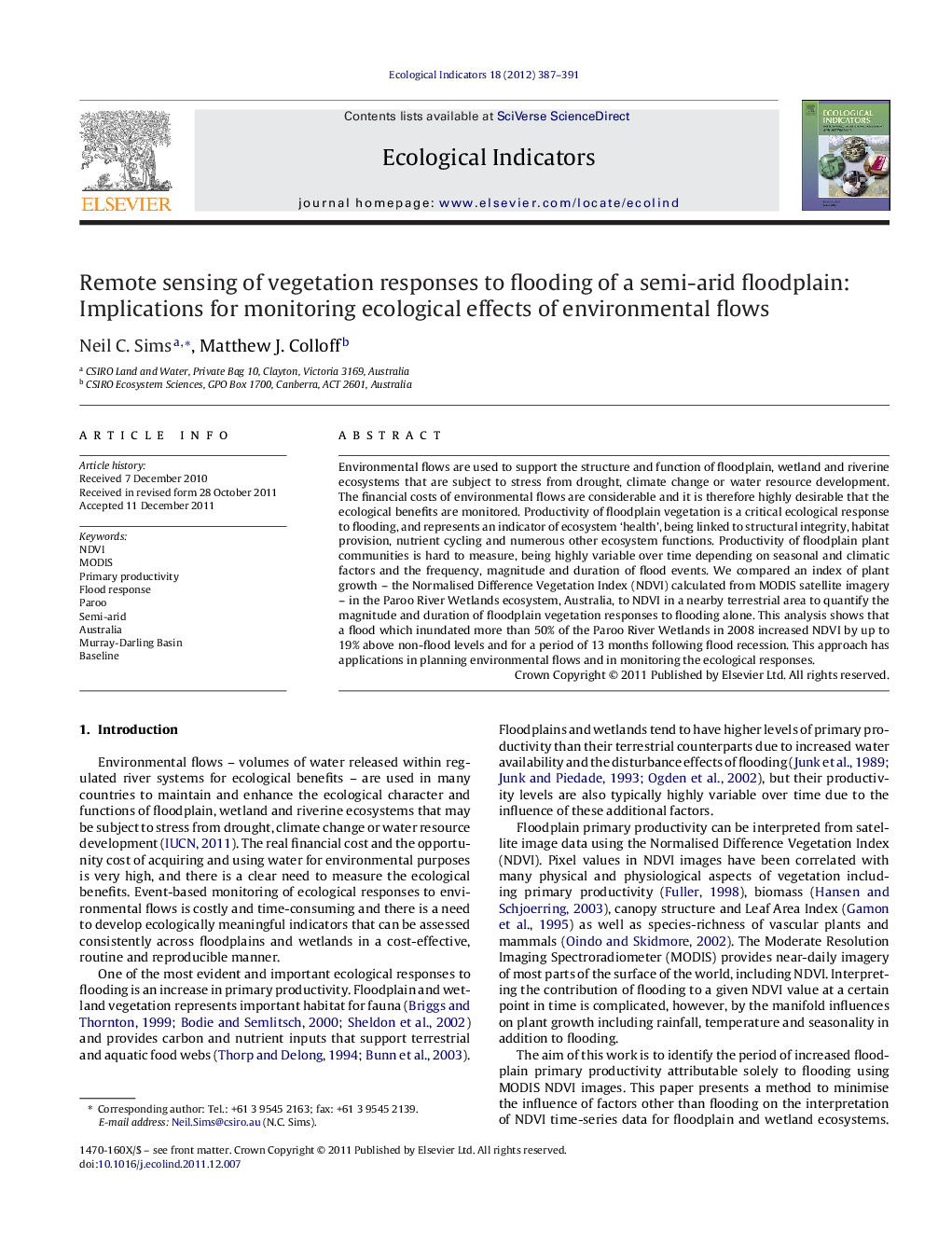| Article ID | Journal | Published Year | Pages | File Type |
|---|---|---|---|---|
| 4373795 | Ecological Indicators | 2012 | 5 Pages |
Environmental flows are used to support the structure and function of floodplain, wetland and riverine ecosystems that are subject to stress from drought, climate change or water resource development. The financial costs of environmental flows are considerable and it is therefore highly desirable that the ecological benefits are monitored. Productivity of floodplain vegetation is a critical ecological response to flooding, and represents an indicator of ecosystem ‘health’, being linked to structural integrity, habitat provision, nutrient cycling and numerous other ecosystem functions. Productivity of floodplain plant communities is hard to measure, being highly variable over time depending on seasonal and climatic factors and the frequency, magnitude and duration of flood events. We compared an index of plant growth – the Normalised Difference Vegetation Index (NDVI) calculated from MODIS satellite imagery – in the Paroo River Wetlands ecosystem, Australia, to NDVI in a nearby terrestrial area to quantify the magnitude and duration of floodplain vegetation responses to flooding alone. This analysis shows that a flood which inundated more than 50% of the Paroo River Wetlands in 2008 increased NDVI by up to 19% above non-flood levels and for a period of 13 months following flood recession. This approach has applications in planning environmental flows and in monitoring the ecological responses.
